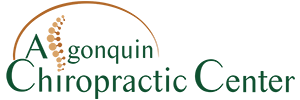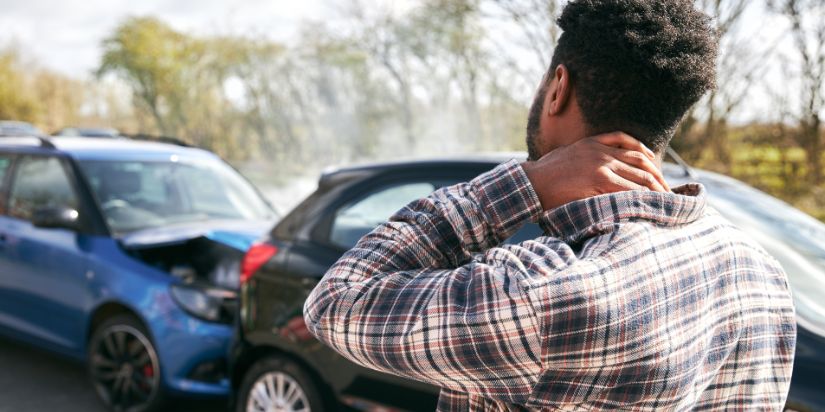How a Car Accident Chiropractor Brings Lasting Pain Relief
According to the The National Safety Council (NSC):
Total motor-vehicle injury costs were estimated at $498.3 Billion in 2021!
That’s an enormous number, a number most of us cannot wrap our heads around. What we can relate to when it comes to car accidents is how they affect us, our families, our health and our pocketbook.
Let’s talk about car accidents, the type of injuries they cause, how car accident chiropractors treat and diagnose them and what happens if they don’t heal and become chronic (one study showed 88% of people with car accident injuries have chronic pain 10 years after the injury).
What Causes Car Accident Injuries?
There are numerous injuries associated with auto accidents. So, to keep it simple, we will focus on spinal injuries, neck pain, headaches, mid-back pain, lower back pain, concussion and any radiating arm or leg pain and numbness related to the spinal injury.
The spine is basically made up of bones or vertebrae and soft issues—mostly spinal ligaments and intervertebral discs.
Types of Car Accident Injuries
There are three main injuries any spine will have:
- Fracture
- Disc injuries (herniations)
- Spinal support ligament injuries (soft tissue injuries)
A car accident chiropractor diagnoses each of these injuries with different imaging such as X-ray, CT or MRI and treats each condition differently.
Going forward, we will not talk about fractures. Instead, we’ll focus on soft tissue, disc and spinal ligament injuries. After watching the video above, you now know that spinal ligament injuries can be the most severe injuries and are often not diagnosed.
Compressive and Shear Forces
The spine is injured with two main forces: compressive forces and shear forces.
You can imagine compressive forces as forces from your head down to your feet. Now imagine the spinal vertebra with the disc in the middle getting compressed. These are the forces that damage or can herniate a disc.
Shear forces are forces produced on the spine when two parts of the body go in different directions. For example, if someone is stopped at a stop sign and is struck from behind by an oncoming vehicle, the person’s trunk and legs will go forward but the head will go backwards! Sounds awful, right! These shear forces are what cause spinal ligament injuries.
To make it clear, think of one vertebra going forward while one is going backwards at the same time and the resultant stretching and tearing of the associated spinal ligaments. This is what causes spinal ligament injuries, or what may be referred to as “soft tissue injuries.”
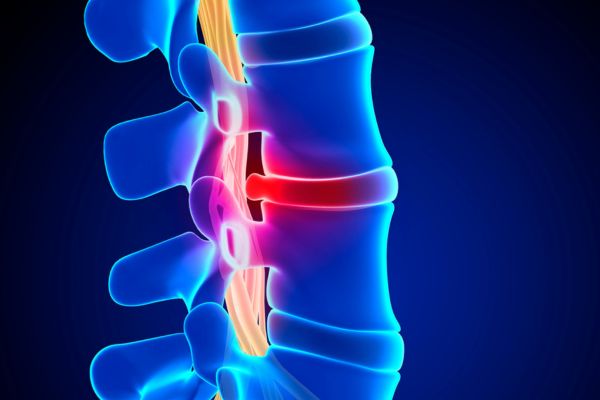
Diagnosis of Car Accident Injuries
After a car accident, you will be confused, scared, anxious and worried about yourself and your passengers—especially if your children are in the car. You may not be thinking clearly due to a head injury, especially if you lose consciousness.
It is important to seek medical care as soon as possible after the accident. When you go, tell the doctor about ALL your injuries even if they seem insignificant to you at the time.
What Happens After a Car Accident
Let’s say you have low back pain after the accident and you do not tell the doctor about the bump on your head, or the abrasion on your hand. Later, if there is a problem with post-concussion syndrome or a fractured hand, the insurance company can try to say you hurt yourself somewhere else and not in the accident because there was not any documentation of these injuries after the accident.
If your injuries were more severe, you may be taken by ambulance to an Emergency Room immediately after the accident. If you don’t go by ambulance, you may drive yourself to an Emergency Room or Immediate Care Center. This will depend on your condition and the condition of your car. Others go to an Immediate Care Center or to their MD the next day or a few days after the accident.
Why You Shouldn’t Wait to See a Doctor
There are several reasons you want prompt medical treatment. You need to get checked out to make sure there are not any serious injuries.
Often, due to the rush of adrenaline, people do not feel any pain immediately after or for a few days after the accident. Your symptoms could get worse over the next 1-2 weeks. If you do not have much pain, you may not think you are injured and delay the diagnosis of a more serious injury.
Seeking prompt medical treatment will also help when you go to settle the case. The longer you wait after the accident to get medical care, the more likely the insurance company will say something other than the accident caused your injuries. Of course, they do this to avoid paying your bill and reducing your settlement.
So, get your injuries documented by a physician as soon as possible after the accident!
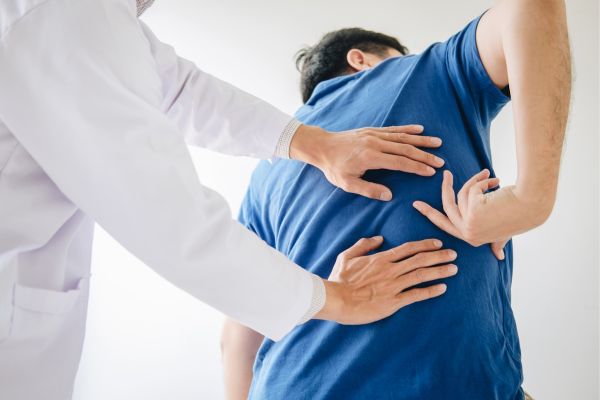
How a Car Accident Chiropractor Treats Injuries
Let me walk you through the process of auto accident chiropractic care here at Algonquin Chiropractic Center.
Initial Forms
We will have you fill out the standard forms for an auto accident when you come in along with some additional forms. You will fill out a form with information specific to your accident, including:
- The day and time when the accident happened
- The road conditions
- Whether it was light, dusk or dark out
- Whether you were wearing a seatbelt
- Air bag deployment
- And more
Other forms we will have you fill out are the Loss of Enjoyment of Life and the Duties Under Duress forms. These forms are necessary to document your disabilities after being injured in a car accident.
The Loss of Enjoyment of life form documents the activities you CANNOT do anymore since the injury. For example, if before the accident you would go to work without a problem, and now you cannot work at all because of the pain, that is “Loss of Enjoyment of Life.”
Duties Under Duress are activities you can do, but they cause you pain and discomfort. For example, if you can still work but your pain increases a couple hours into your work day, this is “Duties Under Duress.” This example is very common because people will continue to work through pain to earn a living for their families.
Consultation
After the forms, we will go into the consultation room where we will review your health history, the specifics of the accident and your injuries.
At this point it is important to document ALL the injuries whether we will be treating them or not. We will follow up on the injuries we are not treating as we go through the treatment plan.
We will also discuss any pre-existing conditions you may have. Pre-existing injuries or conditions are not included in the treatment plan for an accident case unless you injure the same area. Let’s say you had some chronic, low-grade lower back pain which was generally a 2-3/10, and you felt it less than half of the time. Now, after the accident, your low back pain is an 8/10 and is constant. We would treat it until you reach “pre-injury status,” or to the condition it was before the accident.
Examination
After the consultation, we will do an examination. We will check your posture, look for any swelling, bruising or abrasions and document any abnormalities in posture (called antalgia) if they are present. A car accident chiropractor will measure range-of-motion, both actively and passively, and perform any needed orthopedic testing. We will also check sensation, reflexes and muscle strength.
Next, we will do a palpatory exam by pressing on every involved vertebra in the injured area and checking for subluxations. We will palpate all involved musculature looking for increased tonicity, spasm, knots and tenderness. We will also palpate “midline” in the spine, which if tender, can indicate a sprain injury.
Once we have our exam findings, we will have “medical necessity” to perform X-rays, meaning we will have a good reason to perform any necessary X-rays.

X-Rays
X-rays are important car accident chiropractic care for several reasons. First, we want to make sure there are not any fractures in the spine. We will look at alignment, previous degenerative changes, bone spurs, congenital anomalies and anything that will change or alter the way we treat you, including any contraindications to our care.
At the Immediate Care Center or your doctor’s office, they will often do standard X-ray views. What we do at our office, in addition to the standard views, is called “spinal stress X-rays.” This involves gently stressing the spine and taking an X-ray. Here’s how we do it:
We perform spinal stress X-rays the same way in the neck and the lower back. In this example, we will use the neck. We will take an X-ray from the side, which is called our “neutral lateral.” Then we will have you bend your head forward, hold still with your head bent forward and take another X-ray, which we call the “flexion X-ray.” Then we will have you bend you head backwards, hold still and take an “extension X-ray.”
Why do we do these views? We are looking for something called “translation and angulation.” When your vertebra slides forward and backwards, it is called translation, and when it tips up and down, it is called angulation.
X-Ray Analysis
We send your X-rays to an independent, specialized, medical, radiologist who uses FDA cleared software to measure the abnormal movement between each individual vertebra. The radiologists will measure those movements and compare them to normal motion.
We can determine the EXACT location AND severity of the spinal sprain and resultant instability with these measurements. For example, if you have 2.68 mm of translation at C5-6, we know exactly where the injury is and how severe it is. In this example, it is a moderate sprain.
.9 mm of translation at L4-5 is considered normal or a mild sprain (anything less than 1 mm is considered normal or mild).
Severe cases would show translation of over 3.5 mm in the neck and 4.5 mm in the low back. When the spinal sprain is that severe, you could need spinal fusion surgery.
These X-ray measurements objectify damage to the spinal ligaments. The spinal ligaments’ job is to hold the vertebra and the disc in proper alignment. When they are damaged, injured or stretched, they cannot do their job of holding the vertebra in alignment, and we see this abnormal movement or translation.
Now, we can be very specific with our treatments because we know exactly where the injury is. We also have a better idea of the prognosis or how long this will take to heal. Furthermore, we have objective evidence for your lawyer to help settle the case as these are permanent injuries according to the American Medical Association’s Guides to the Evaluation of Permanent Impairment.
These specialized X-rays are the key to finding and treating the problem. They give objective evidence for a previously subjective injury (a soft tissue injury) and determine its permanency.
MRI
Once we see ligament damage on the stress X-rays, we have medical necessity to order an MRI. If you remember from above, “medical necessity” means having a reason to do a test or procedure.
When we do an MRI in trauma cases, we look for subtle fractures and herniated discs. If you have a spinal ligament injury AND a herniated disc at the same level, the car accident injury is more severe. This type of damage may be the worst spinal soft-tissue injury you can have, and it is not unusual to have this injury in a trauma case.
Treatment
After our consultation, examination, X-rays, including stress X-rays, and an MRI, if we can help you, we will accept your case and begin treatment.
What kind of treatment will you receive from a car accident chiropractor at Algonquin Chiropractic Center?
We will put together an individualized car wreck chiropractor program for you that will use some or all of the following:
- Spinal Adjustments
- Cox Technic
- Spinal Decompression
- Soft-Tissue Work
- Electrical Stimulation
- Super-Pulsed Laser Therapy
- Rehabilitation (including stretching and strengthening exercises)
- Whole Body Standing Vibration Therapy
- Spinal Bracing
- Custom Orthotics
- Diet and Nutrition
How long does car accident chiropractic treatment take? It depends on the severity of the injury. A mild-moderate injury may heal in 2-4 months, while a more severe injury could last a lifetime and some people never fully recover. In many cases people are doing well in 3-6 months (sometimes a year or longer).
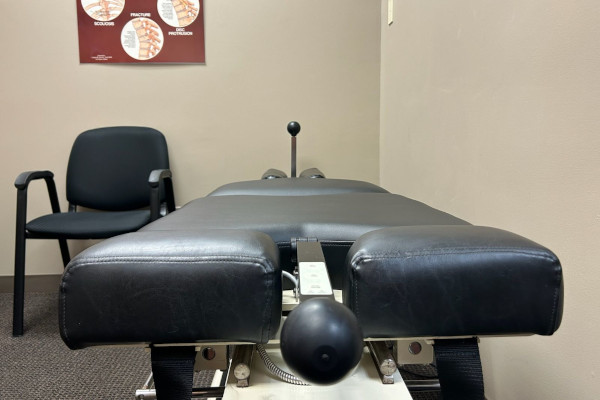
What Happens When Treatment is Over?
When you reach MMI or Maximum Medical Improvement, meaning you have either fully recovered or your condition is as good as it is going to get, we will do an exit exam and have you fill out the Loss of Enjoyment of Life and Duties Under Duress forms again.
When we finish car accident injury treatment, we will recommend how much ongoing care you will need to prevent recurrences or maintain your level of improvement. We usually recommend 1-2 adjustments per month.
If you are working with a lawyer, we will send him or her all our records. Then it will be out of our hands, and your case will be in the legal system.
How long does the legal case take to settle? I would plan on at least 1-2 years or longer. I had one case that took 7 years! Ask your lawyer.
You Do Not Want to Be a Chronic Pain Statistic!
After a car accident, your main concern is to get a FULL PHYSICAL RECOVERY! A study showed 88% of injury victims are chronic 10 YEARS after the accident! 9 out of 10 people are not fully recovered? Who is treating these people?
If your condition is not properly diagnosed, if your well-intentioned doctor misses a spinal ligament injury by not doing stress X-rays, if a concussion is not worked up or treated properly, if you do not get care in a timely fashion, if you do not follow through with care, if your care is not specific enough to treat specific spinal injuries and spinal ligament injuries, you will be at greater risk of having a chronic condition.
We have you covered! Our goal for you and any patient that comes into our car accident chiropractor office is to PREVENT them from becoming a chronic pain patient.
If you were in an accident, it may not have been your fault. You should not have to suffer for the rest of your life because of someone else’s negligence.
We will make sure we find any underlying spinal problems, ligament injuries and more. We will implement an individualized auto accident chiropractor treatment plan specifically for you to bring you to “pre-injury status” and will work very hard to prevent you from becoming a chronic pain statistic!
Need a licensed car accident chiropractor in Algonquin, IL, to help you fully recover from your injury? Call Algonquin Chiropractic Center today to schedule a consultation!
